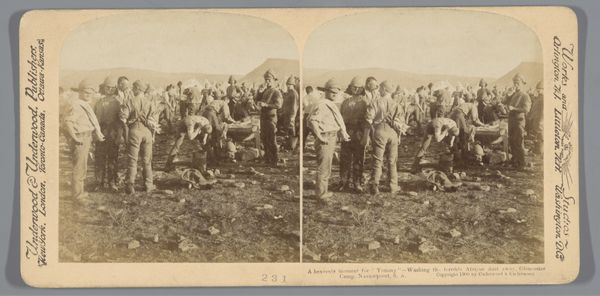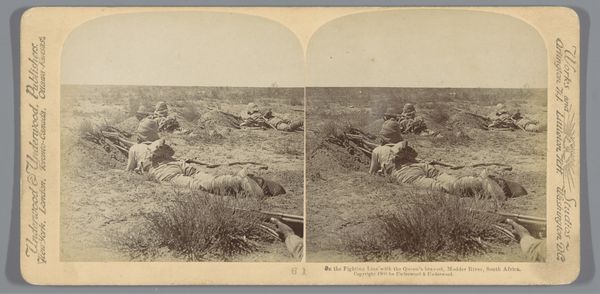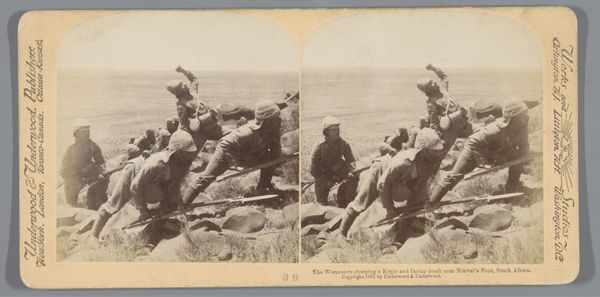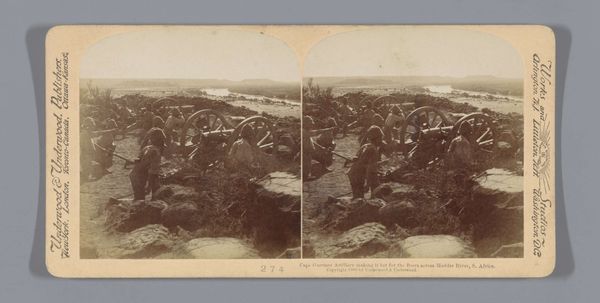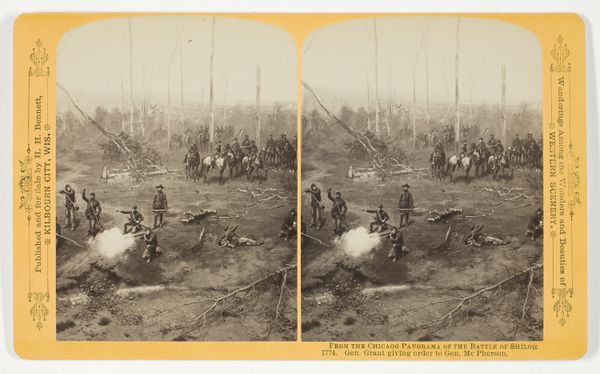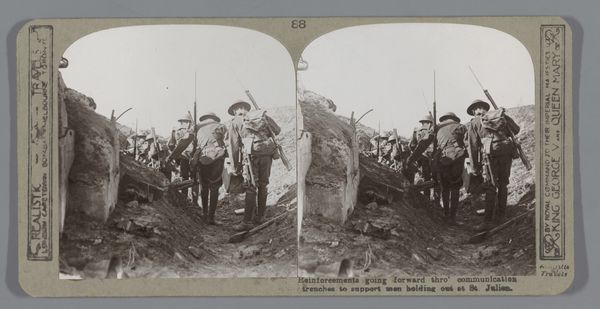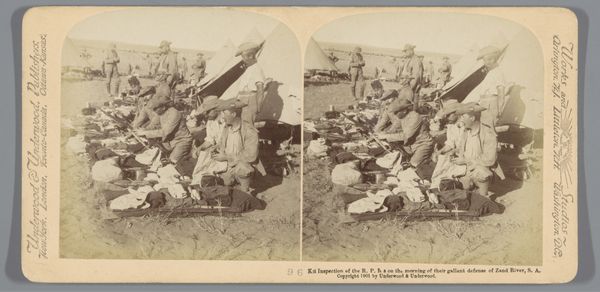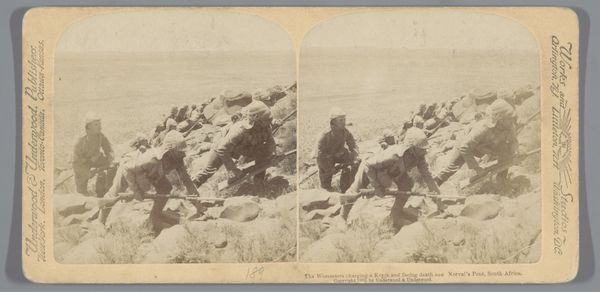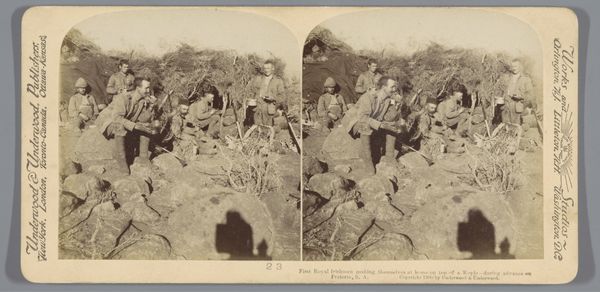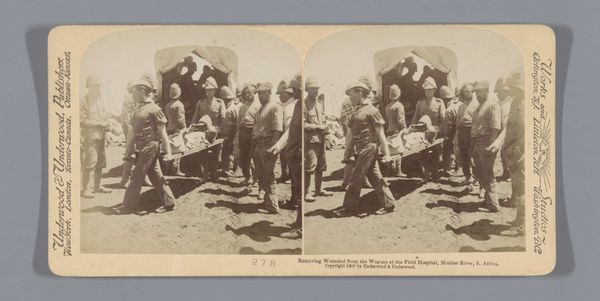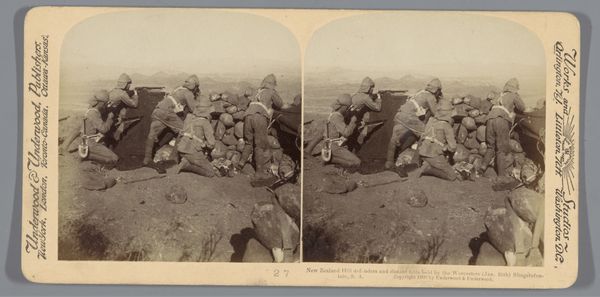
print, photography, gelatin-silver-print
#
portrait
# print
#
photography
#
coloured pencil
#
gelatin-silver-print
#
genre-painting
#
realism
Dimensions: height 88 mm, width 178 mm
Copyright: Rijks Museum: Open Domain
Curator: Let’s turn our attention to this stereoscopic print, titled "Voorstelling van rustende soldaten bij Driefontein, Zuid-Afrika," created anonymously in 1901. Editor: There's such weariness etched into this image. A group of soldiers appear to be resting on the field. They look absolutely drained, their bodies slumped, and faces hidden. Curator: The photograph presents a view of soldiers presumably resting after a battle during the Second Boer War, which took place at Driefontein in South Africa. Consider the purpose of creating and distributing such images, and how these views impacted or shaped popular perception of the conflict. Editor: The Second Boer War—it's crucial to acknowledge the violence of British colonialism. The image appears serene, but it reflects the brutal reality of imperialism. How can we engage viewers to consider the lasting effects of British expansion? What were the lasting impacts on indigenous communities after this battle? Curator: That’s a key question. The image format, a stereoscopic print, also tells us something about its original purpose: it was created for mass distribution and consumption, aiming to bring faraway conflicts “closer” to home, to create a kind of 3D virtual experience, but what kind of experience was it really? Editor: We need to look beyond the romantic idea of bringing a scene closer. What exactly was the intent? Was it glorifying war or simply reporting on it? The casual arrangement of bodies, and even what looks like discarded equipment...these aspects may communicate the emotional and psychological effects of such long, intensive conflict on soldiers, the physical and moral cost of war. Curator: Absolutely. The distribution of these images helped to mold the narrative of the war for public consumption. Think about how different this image might look from photographs taken by colonized Africans, fighting against the incursion onto their homelands. What might these unseen views reveal about the propaganda and politics of the time? Editor: The anonymity of the photographer feels symbolic too, as it erases the labor and context of producing such a sensitive image in such conditions. We must continue to confront whose perspectives were prioritized then—and how to change representational imbalances now. Curator: It's precisely this intersection of art and activism that encourages audiences to consider alternative narratives that go against those distributed en masse, pushing us to think critically about what is being shown versus what is concealed.
Comments
No comments
Be the first to comment and join the conversation on the ultimate creative platform.
